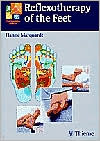Atlas of the Diabetic Foot
"an excellent reference book (and) an important addition to any clinician's library" from a review in Practical Diabetes International\ Foot ulcers occur in approximately 15% of the patients with diabetes mellitus in their lifetime, with a major impact on their quality of life. Many hospital admission related to diabetes are due to foot ulcers, which can result in prolonged hospital stay and increased morbidity and mortality. The majority of lower limb amputations are performed in patients...
Search in google:
Foot ulcers occur in approximately 15% of the patients with diabetes mellitus in their lifetime, with a major impact on their quality of life. Many hospital admissions related to diabetes are due to foot ulcers, which can result in prolonged hospital stay and increased morbidity and mortality. The majority of lower limb amputations are performed in patients with diabetes every year (80,000 at least in the USA). Most of the diabetes-related foot problems can be prevented or their severity reduced by early detection and treatment. This book contributes to improved foot care through raised awareness of prevention, clinical manifestations, diagnosis and management among healthcare professionals. This comprehensive atlas, now in a second edition, provides:520 colour photographs, graphs, tables and imaging studiesEducational examples taken from genuine case reportsA reference guide for identifying patients at risk for foot problemsIllustration of common problems such as neuropathic and neuroischaemic ulcers, ischaemia and infectionIntroduction to new technologies and bioengineered materials used for the treatment of foot ulcers This book will be of interest to diabetologists, endocrinologists, podiatrists, specialist nurses, general practitioners, surgeons and clinical researchers.
PrefaceAcknowledgmentsCh. IWho is the Patient at Risk for Foot Ulceration?1Ch. IIClassification, Prevention and Treatment of Foot Ulcers23Ch. IIIAnatomical Risk Factors for Diabetic Foot Ulceration41Ch. IVSome Uncommon Conditions73Ch. VNeuropathic Ulcers at Various Sites85Ch. VINeuro-Ischemic Ulcers at Various Sites105Ch. VIIGangrene125Ch. VIIIInfections151Ch. IXNeuro-Osteoarthropathy. The Charcot Foot185App. 1Anatomy of the Foot213App. 2Manufacturers of Preventive and Therapeutic Footwear217Index221
\ From the Publisher"Is this a useful book? Yes! There are a number of similar books currently on the market -- Diabetic Foot Care, Foster and Edmondson (Wiley-Blackwell, 2011), comes to mind. These books follow a similar pattern in that they are based on the authors' experiences in their institutions. This second edition is an improvement on the original and is, overall, a useful book in the battle against diabetes and the challenge of the diabetic foot. Money spent on this small, but very enlightening book is well spent." (Doody's, 29 July 2011)\ \ \ \ \ From The CriticsReviewer: Martin C. Yorath, DPM(Rosalind Franklin University of Medicine and Science)\ Description: This is a well-illustrated overview of the clinical presentations of the diabetic foot and follows the fairly well-trodden path of ulcers, neuropathy, ischemia, infection and Charcot arthropathy. This second edition builds upon the previous edition, published in 2003, and contains several updates.\ Purpose: The book presents a systematic description of the diabetic foot. As much as it is designed as a reference, it also will serve as an educational tool for future generations of healthcare providers. It is easy to read and is logically laid out.\ Audience: It is aimed at clinicians as well as students. Both physicians and surgeons will find this a useful book for educational purposes — it focuses as much on treatment as it does on prevention. The authors, all from Greece, are well respected in their specialties. This should be a well received text.\ Features: The 14 chapters are laid out in a logical sequence, with references at the end of each. All chapters have been revised, new illustrations have been added, and chapter sequencing has been rearranged. There is a curious and somewhat unnecessary appendix which consists of one page of line drawings and a rather poor lateral projection of the foot, which serves to name the bones. At the very least, if this is going to be included, ankle views also should be part of the appendix, but the reality is that none of this is probably necessary in the first place. To the authors' credit, the book is well illustrated with color plates and a few line drawings, which definitely enhance the overall quality.\ Assessment: Is this a useful book? Yes! There are a number of similar books currently on the market — Diabetic Foot Care, Foster and Edmondson (Wiley-Blackwell, 2011), comes to mind. These books follow a similar pattern in that they are based on the authors' experiences in their institutions. This second edition is an improvement on the original and is, overall, a useful book in the battle against diabetes and the challenge of the diabetic foot. Money spent on this small, but very enlightening book is well spent.\ \








